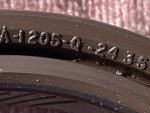- 365
- 266
- 63
- Location
- Myakka City, FL
Thank you. When I get back to it and reseal that hub I will continue on the quest. Until a later date.You have followed the plumbing, left is “T” d to right and front is “T”d to rear. There is no way to send air to just one tire. In emergency mode, the timed routine is changed and the controller simply checks the tire pressure much more frequently and adds as necessary, instead of the normal 15 minute checks. It probably also overrides or loosens the parameters on the need for stable pressure at it’s pressure checks. One leaking tire will deflate on it’s own but as soon as the system is pressurized and all the wheel valves are open, 3 good tires will attempt to fill and equalize the leaking tire...
the quick release/dump valves don’t make much noise when air is applied to their supply. The only time they really make noise is when pressure is released from the supply side and they dump their output side to the vent to equal that low supply pressure. So every time the PCU opens the control solenoid and releases system pressure, they honk briefly.
Now if your supply was feeding slow, as in the issue you described with the protection valve on the wet tank, as the system sent enough pressure thru the dump valves to open the wheel valves, the greater wheel pressure would flow back to the dump valves and be vented until the supply side of the dump built enough pressure to equal the tire pressure...
On my truck, right after that protection valve on the wet tank, there is a T fitting. The smaller line(circled in first pic) runs to the hydraulic manifold to supply air to the cab air suspension valve. The larger line runs directly to the passenger cab floor to feed CTIS and the fan control solenoid... The CTIS line is just out of sight behind it... you can just see the big line to ctis all the way to the right in the second picture...
View attachment 821880View attachment 821881
Lugnuts



